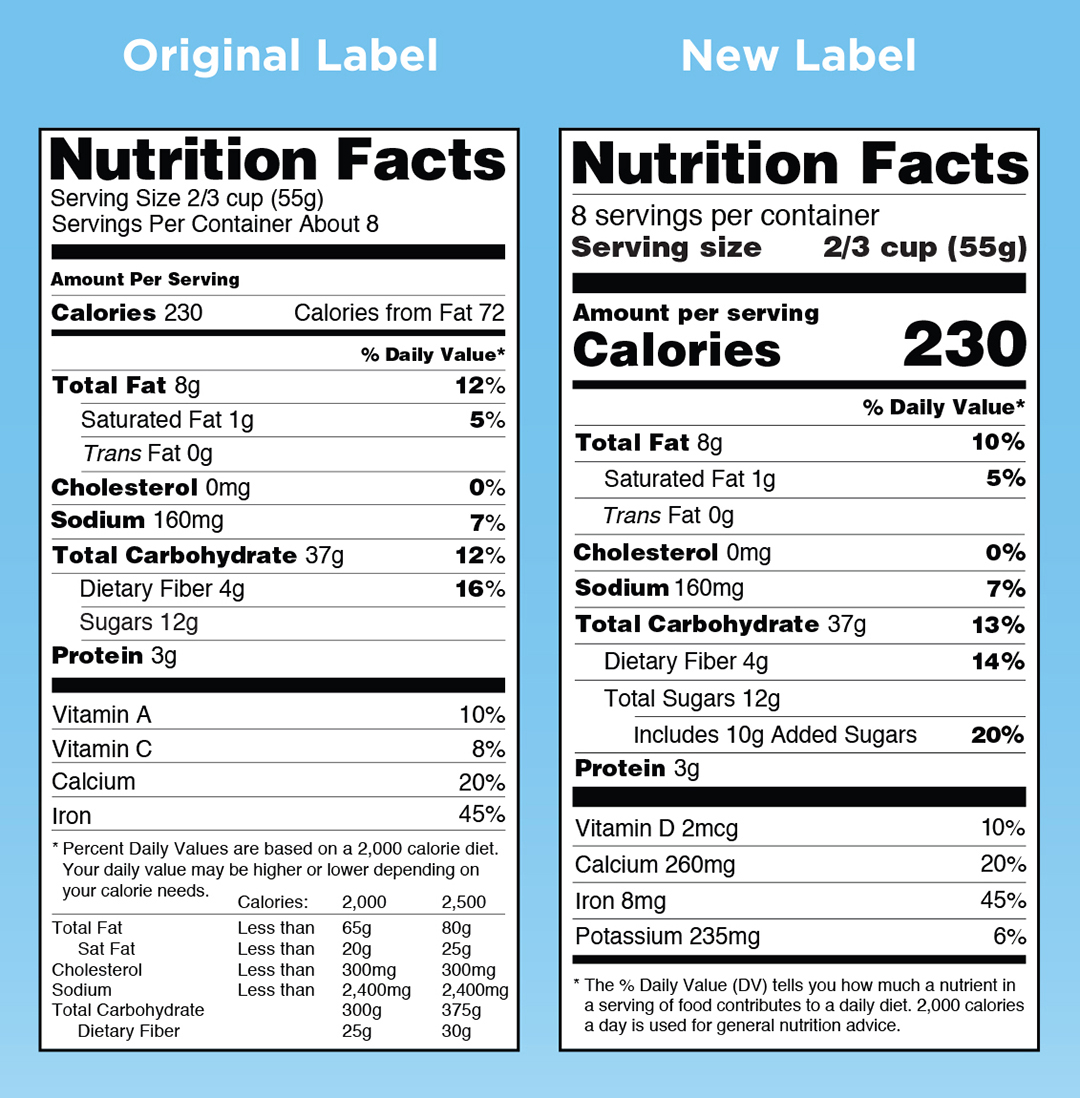Food manufacturers got fair warning: Back in 2016, the U.S. Food and Drug Administration announced changes to the format of products’ nutrition facts panels. Depending on company size, manufacturers had until January 2020 or 2021 to enact the edits. That means you’re starting to see the 2.0 label on store shelves. So what’s new, nutritionally?
We got the dish on the latest label from a local pro who spends a lot of time digesting supermarket labels: Morgan Pavon, a registered dietitian at the Hy-Vee in Altoona.
1. Serving sizes go bold.
“Many consumers get tripped up by portion sizes and may not realize the amount they are consuming until one day they decide to take a peek at the small lettering on the nutrition facts label, only to be shocked,” Pavon says. Now the total calories per serving will be big and bold. “By law, serving sizes must be based on the amount of food or beverages people are actually consuming, not what they should be. For example, a serving of ice cream will be listed as 2/3 cup instead of 1/2—most individuals consume [on average] 2/3 cup in a sitting.”
2. Calories are in the spotlight, too.
All foods can fit in a nutritious meal plan, Pavon says, even high-calorie ones. But the fact that the caloric value of a food is larger on the new label reflects the FDA’s view that “energy-dense foods that provide little to no nutrition should be consumed in moderation and with awareness,” Pavon says.
3. But not calories from fat—those are no longer listed.
That’s because some fats are good. (Somebody time travel back to the ’90s and please let them know.) “Research has shown that it isn’t necessarily the amount of total fat, but the type. Fats found in olive oil, avocados, and nuts and seeds are heart-healthy fats known as unsaturated fats,” Pavon says. “Saturated fat found in baked goods, cake, cookies and more should be consumed in moderation. Lastly, there are trans fats, which is required by the FDA to be on a label. This is because the source of artificial trans fat is not deemed safe.”
4. Sugars get stripped down.
“Added sugars provide your body with nothing but the sugar itself. Food with natural sugar can offer so much more than sugar and calories,” Pavon says.
A medium apple and a Snickers bar have nearly the same amount of total sugar: 20 grams. Unlike the candy bar, though, the apple has 4 grams of fiber to keep you satisfied longer, plus it’s packed with vitamin C, potassium and other vitamins and minerals that can help combat colds, reduce inflammation and help keep your brain sharper.
5. There’s still plenty of wiggle room. As always, the FDA still allows manufacturers to be up to 20% off (high or low) with their nutrition estimates. So take all of this information with a grain of salt.
 –Karla Walsh
–Karla Walsh










